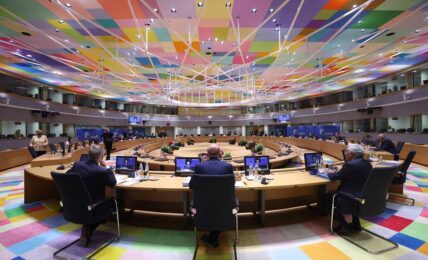ING announced today an expansion of its approach to align its oil and gas portfolio with its climate goals, with plans to introduce new funding restrictions targeting oil and gas infrastructure, and to reduce the volume of traded oil and gas financed in its Trade and Commodity Finance business.
The new planned restrictions follows the bank’s announcement last year that it will no longer provide new dedicated upstream finance for oil and gas fields approved for development after the end of 2021. ING stated that aligning its portfolio with the International Energy Agency’s (IEA) Net-Zero Emissions by 2050 Roadmap, and that it is on track to reduce its upstream oil and gas portfolio by 19% by 2030, in line with the IEA pathway.
Today’s announcement aims to expand ING’s approach beyond upstream, and into other areas of the oil and gas value chain. This will include restrictions to midstream infrastructure, with ING looking to adopt a net zero by 2050-aligned methodology for areas including pipelines, liquified natural gas terminals and storage facilities.
In its Trade and Commodity Finance business, ING said that it is aiming to reduce the combined volume of oil and gas that it finance using the same 19% by 2030 target under its upstream commitment, and will be reaching out to experts and peer banks to co-develop a methodology for reduction targets based on volumes financed. ING said that it aims to publish a target for Trade and Commodity Finance in 2024, aligned with the IEA Net Zero pathway.
ING reiterated that it will continue financing clients that are active in the oil and gas sector, noting that its strategy aims to balance the needs to decarbonize, for energy to remain affordable, and to ensure the security of energy supply. In a statement outlining the new climate finance plans, the bank said:
“It’s a balancing act. Moving away from fossil fuels has a social impact – if the supply of fossil fuels decreases too fast, the price of energy could skyrocket and bring many people into financial problems. We want to balance our climate action with our societal role to ensure energy remains affordable and available for people and companies.”
ING added that the new commitments form part of the bank’s ‘Terra approach’ to steer its loan portfolio to align with 1.5°C. Terra assesses the technology shifts needed across various sectors in order to achieve the climate target, relative to the technology used by the bank’s clients currently, setting a direction to apply its financing activities. The approach focuses on several high-emitting sectors, including energy, automotive, shipping & aviation, steel, cement, residential mortgages and commercial real estate, and helps the bank determine if its lending is contributing to climate resilience in these areas.
The post ING to Restrict Funding for Oil and Gas Infrastructure appeared first on ESG Today.



